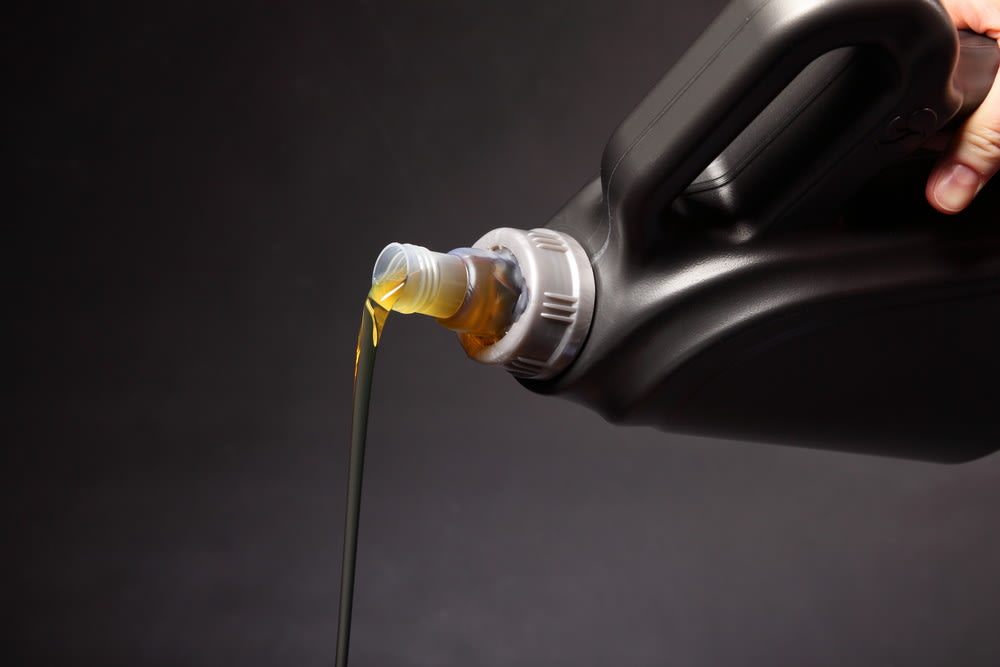

Every driver knows the importance of regular oil changing. Typically, motor oils stay stable and have a shelf life of up to five years. However, this stability can depend on a number of factors and it is always advisable to follow the manufacturer’s storage instructions. You must also keep a watch on the expiry date and refrain from using the motor oil once it has crossed that date. There are different types of motor oils available in the market such as synthetic motor oil, synthetic blend motor oil, high-mileage motor oil, and conventional motor oil. Their composition and the additives in them will affect their stability and storage capacity.
Composition of motor oil
The main factor that dictates the shelf life of motor oil is its composition. Synthetic motor oil is sourced from petroleum and non-petroleum chemical compounds. The hydrocarbon molecules in synthetic motor oil spread evenly through it. This forms a base, or alkali, that remains stable at both very high and very low temperatures. It does not contain pollutants like paraffin wax, a component of crude oil, which also contributes to a longer shelf life.
Additives dictate shelf life
Mobil 1 and other oil manufacturers add several compounds to their oil products so that it can best protect your engine and also last longer. These additives ensure that the synthetic motor oil maintains its viscosity or consistency. In other words, it must freely flow at all temperatures within the required test standards.
If the motor oil contains elements like copper and iron, that could contribute to its lower shelf life since these elements act as catalysts and speed up oxidation.
To stop the motor oil from freezing at low temperatures, manufacturers add pour point depressants, or PPDs. PPDs are a kind of polymer that works to inhibit the forming of wax crystals so that the motor oil flows freely.
Detergents and dispersants in the motor oil delay the formation of sludge and help keep the oil clean by suspending contaminants in the oil.
Defoamants protect the motor oil from frothing and forming bubbles.
Most motor oils contain alkaline additives that work to neutralize the acidic contaminants.
Oxidation inhibitors help maintain the stability of the motor oil while rust and corrosion inhibitors prevent condensation.
Calcium additives ensure that the oil receives the oxygen it needs. They also help to delay the formation of sludge and varnish.
Other factors dictating shelf life
It is advisable to store the motor oil at constant optimum temperatures of between 40 degrees and 85 degrees Fahrenheit. Extreme temperatures such as below 0ºF or above 100ºF can affect the stability and the ability of the motor oil to effectively lubricate the engine. Very low temperatures can result in the formation of sediments in the motor oil.
Storing the motor oil in a dusty environment can result in deterioration of its quality.
Exposure to humidity can cause condensation in the motor oil. This moisture can react with the additives in the motor oil and form insoluble particles. Sludge can also form and the motor oil can turn into a breeding ground for microbes.
If the bottle of motor oil remains unopened, it stays stable for a longer time.
Identifying signs of stable, usable motor oil
If you have stored the motor oil in a cool, dark place and it has not passed the expiry date, you could use it. However, you must check it carefully for its consistency. If it is thick and sticky, and has solid or gel-like particles, do not use it. If you see that the additives seem to have separated from the oil, it is not safe to use. You must also check its color. Usable motor oils have a clear appearance and if you notice any milkiness or haziness, that is a sign of water contamination. A change in the original color of the motor oil could also indicate its instability.
Keep in mind
Despite keeping opened or unopened bottles carefully, changes in the temperature of your storage area can result in the air moving in and out of the bottle. This is especially true if there is vacant space in it. At high temperatures, air forces out of the container and at low temperatures, air is pulled into it. This can result in the motor oil degenerating over time.
If you have recently bought a new car or any other vehicle, check if the motor oil you have is compatible with the engine of the new vehicle. Manufacturers upgrade engines all the time and your old motor oil may not be able to meet the new standards and requirements. Using the wrong oil can result in damage to your engine.
Regulations pertaining to the motor oil being used in cars can also change over time. Make sure your motor oil is compliant with them before using it.
Mobil 1 produces a range of conventional and synthetic oils, including Mobil 1 Classic, Mobil 1 Advanced Full Synthetic Motor Oil, and Mobil 1 High Mileage. YourMechanic brings top-quality Mobil 1 oil to every mobile oil change.



